Sacralization of Outrage and How to Break Free
When rage is combined with religious and ideological absolutism, avenues of freedoms vanish. Dissent is met with ruthless subjugation and every atrocity is covered up by ambivalence. Let's deep dive.
World is changing. So is global consciousness. As people in areas ruled by Abrahamic belief systems reject their faiths and seek meaning to life afresh, the ancient gods are rising again.


Consciousness is not of this planet. Nor is it of this realm.
It is the primordial substratum of this existence.
What is there today. Whatever. Was always unmanifest in that primordial consciousness.
It expressed itself many times before.
It will fold back in again. And rise yet again.
The waves in the ocean rise and fall.
Ocean still is.
It always was. Nothing changes. Yet it does.
The truth is not of the wave. It is the ocean.
This wave will subside too.
Do we want to know the ocean?
That, is the question!
As we are entering any temple, we see the "demon-like" face staring at us from just above the entry.
That face has the distinction of being called the Kirtimukha. Or, the Glorious Face.
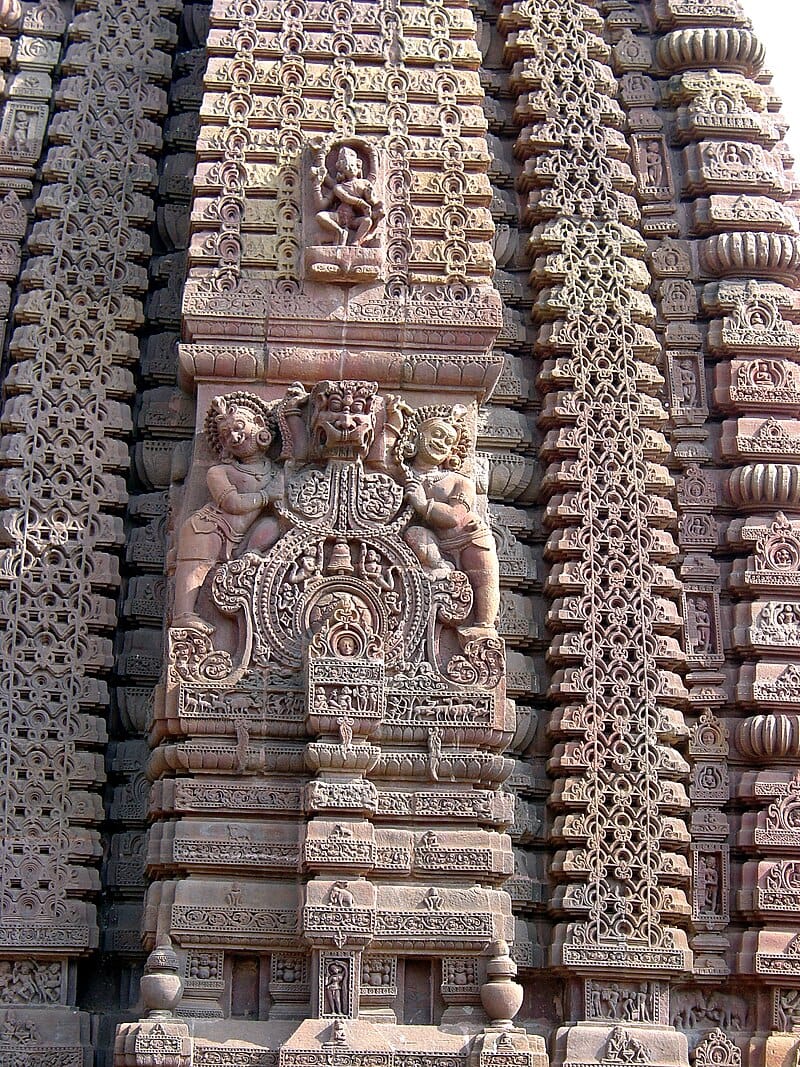
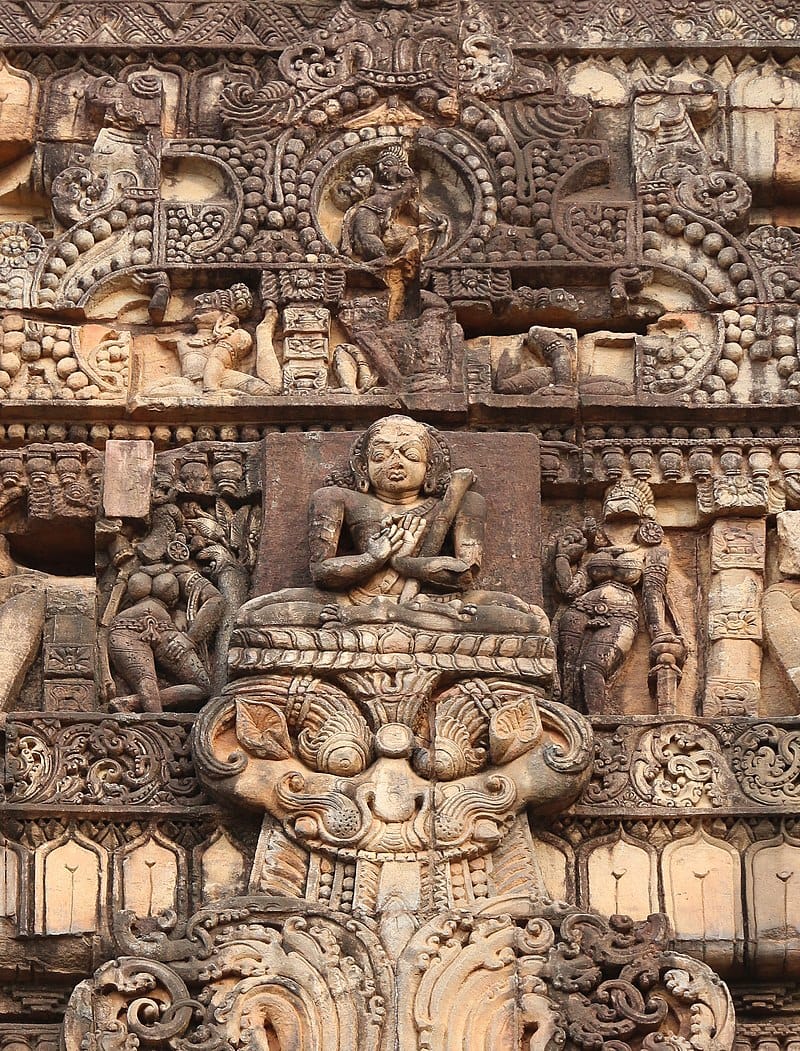
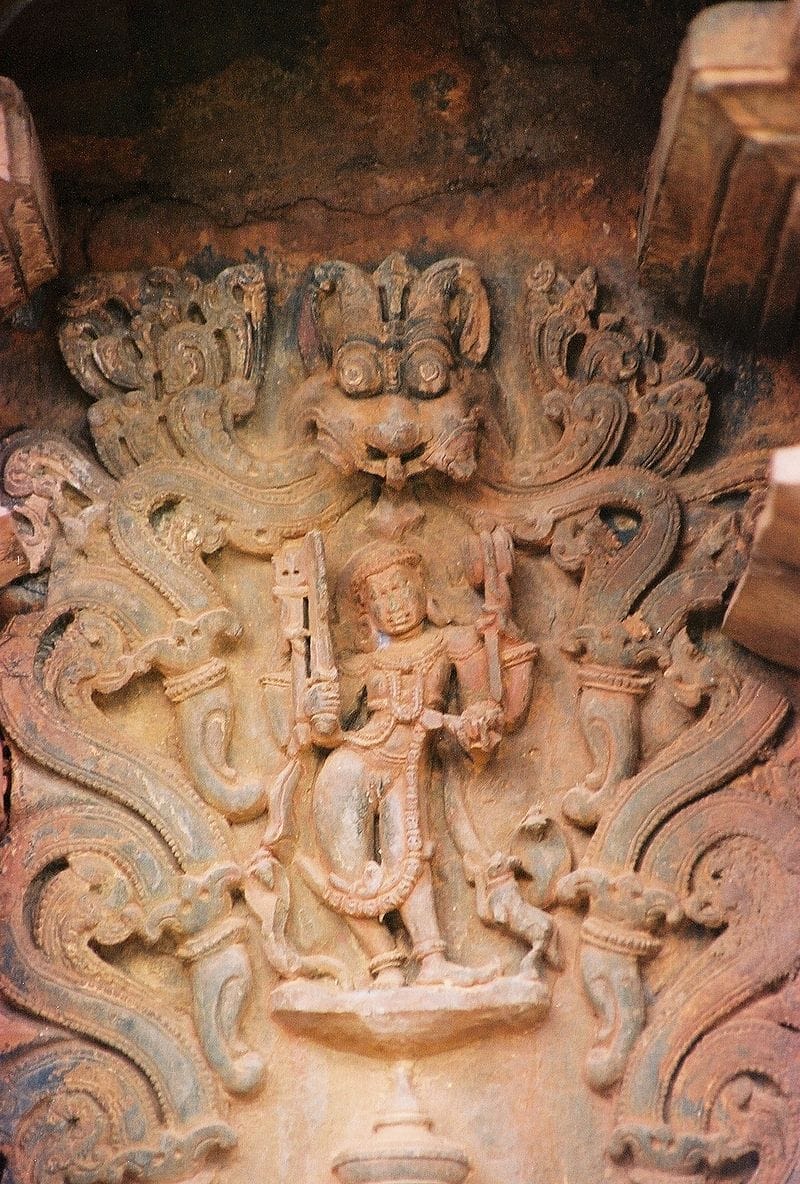
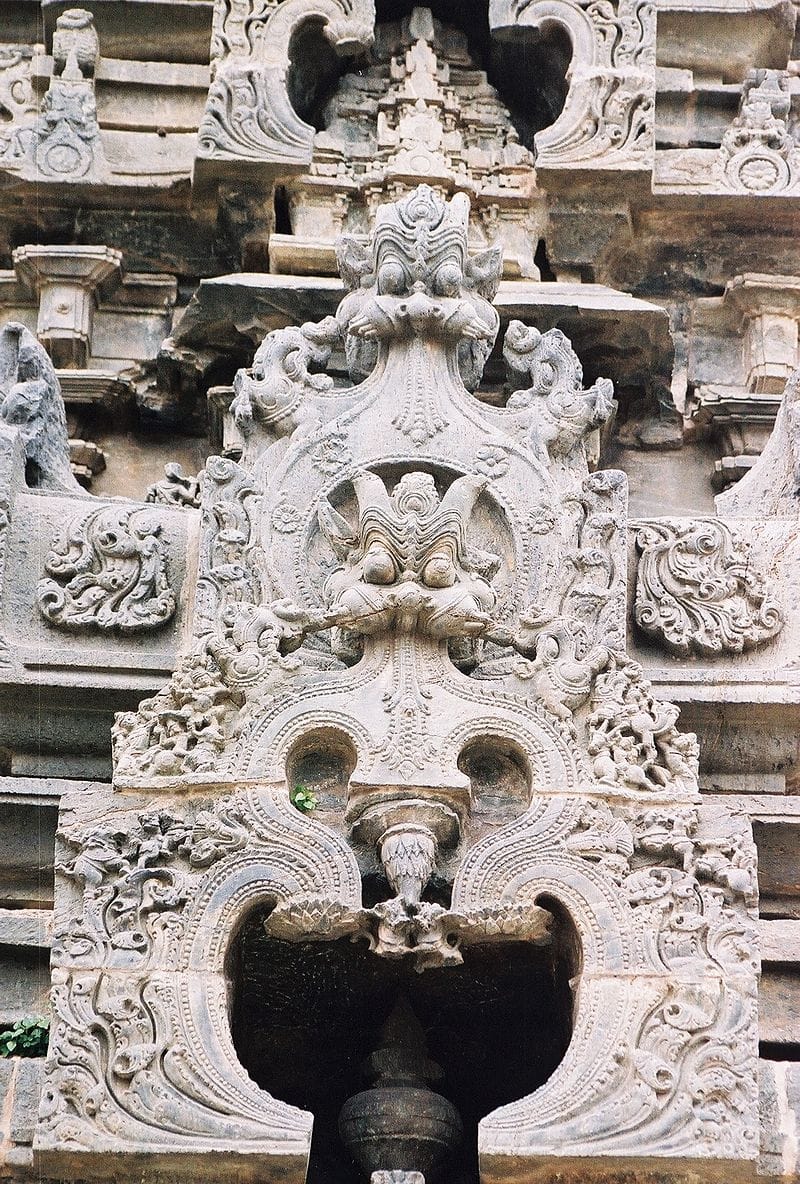
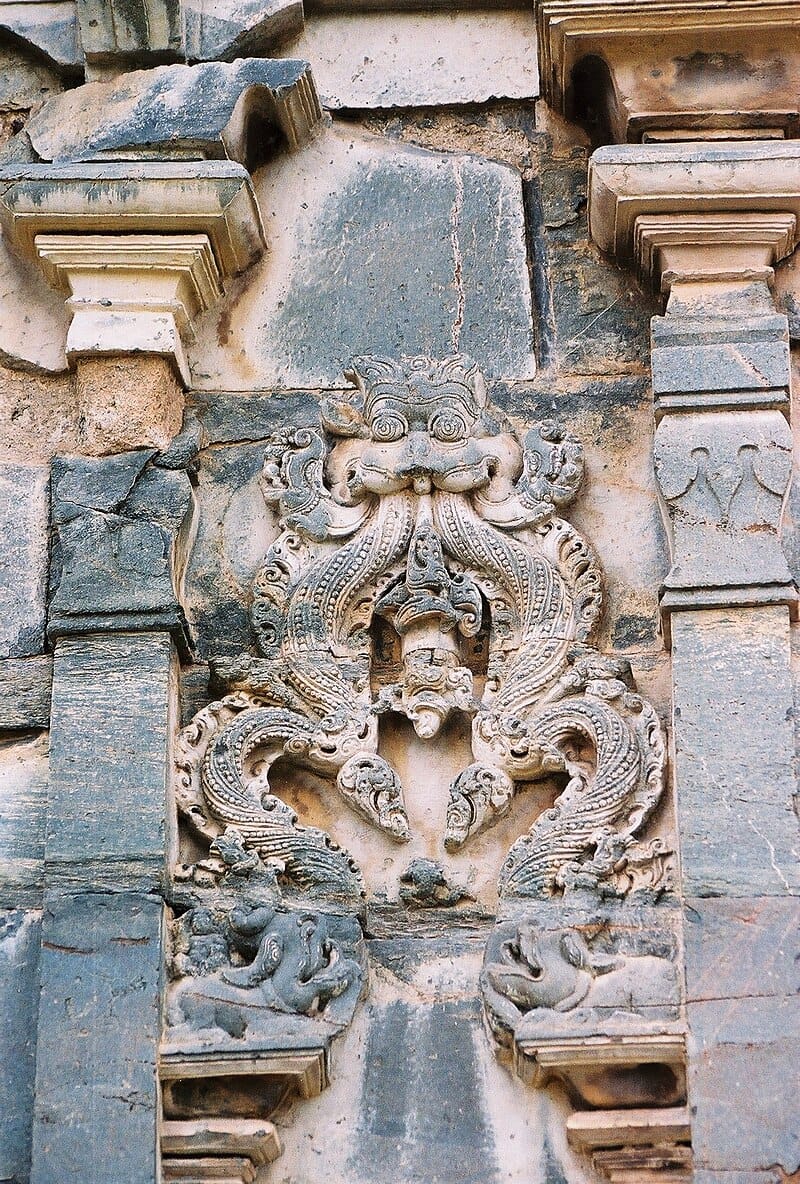
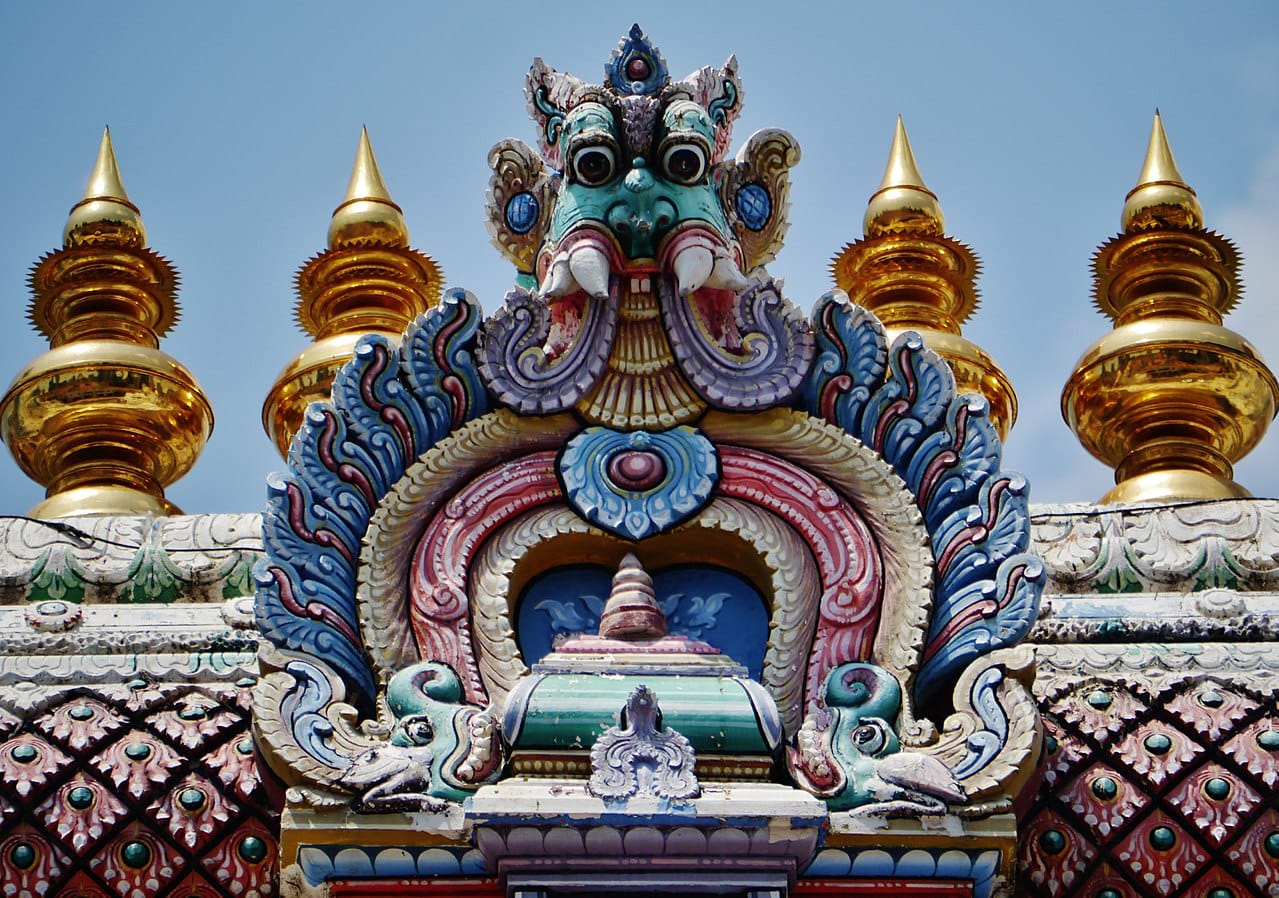
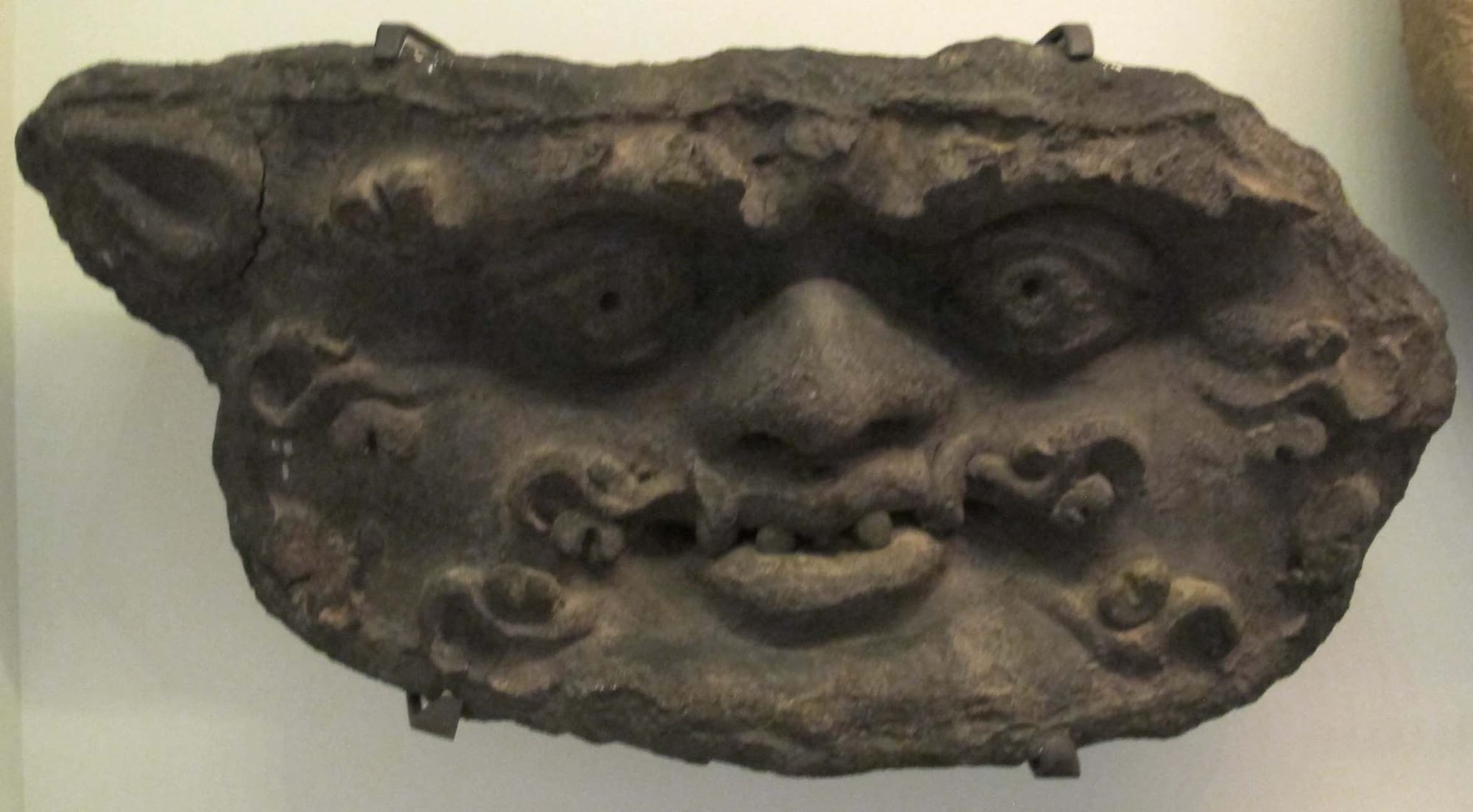
Who or what is Kirtimukha?
There are various mentions - Padma Purana and Skanda Purana.
The story is about an asura named Jālandhara who sent Rahu to share his desire for Goddess Parvati. The legend says it angered Shiva so much that his rage created a Gana (many translations call it demon) to devour Rahu. Rahu fell at Shiva's feet and asked for forgiveness.
Since he was the messenger, Shiva let Rahu go unharmed. But the Gana needed to eat. He asked Shiva "How should I take care of my hunger?" Shiva asked him to eat himself. And, that is what the Gana started doing.
When Shiva looked at him again, he found that Gana had devoured every part of himself except his face. (Source: Kirtimukha / Sri Kamakoti Mandali)
Shiva was so amazed at that face, that he called it the Kirtimukha. That Kirtimukha, a Gana (or a Demon, per some) that has nothing except a face now adorns every temple.
Before one goes inside, Kirtimukha is what one looks at.
A word about Ganas. They were not demons. In the eyes of many people, they were "deformed and strange creatures". They were Shiva's companions.
Because no one could ascertain their form as recognizable, it is sometimes conjectured that they were not of this planet.
It is this reason why it is also said that Shiva may not have been of this planet either. But we will not get into that right now.
The form of Kirtimukha was not confined to India, though its origin was from the Puranic spiritual practices.
What was understood as Kirtimukha in the Indian spiritual context, also found its way to other civilizations.
In ancient Greek culture, the Gorgoneion served as a unique protective charm featuring the head of a Gorgon. It was notably worn by the gods Athena and Zeus, who are frequently shown adorned with this amulet, symbolizing their connection to ancient and still potent deities. This emblem was also adopted by Hellenistic rulers as a symbol of their divine lineage or safeguarding, as evidenced in artworks like the Alexander Mosaic and the Gonzaga Cameo, where it signified royal or divine endorsement.

This figure was not just confined to Greece. It made its way to the other areas in Europe as well.
The Green Man, a figure often depicted as a face surrounded by or made from leaves, is not exclusively Celtic but appears across many cultures and traditions, including within European medieval art and architecture. However, its symbolism resonates with many themes in Celtic spirituality and mythology, where nature, forests, trees, and the cycle of growth and rebirth are significant.
In Celtic spiritual traditions, the Green Man would be interpreted as a symbol of the life force of nature, the eternal cycle of spring's growth, summer's flourish, autumn's harvest, and winter's death and rebirth. This figure embodies the intimate relationship between the human and natural world, suggesting a unity and interdependence between people and nature.
There are a lot of commonalities between Hinduism and the ancient Celtic traditions.
Let us take an example of the astrology area.
Budh in the Celtic languages is the name given to Mercury which means wise. Isn't that similar to what Hinduism has?
Boudi and the stem budh appear in all the Celtic languages. It means – all victorious, gift of teaching, accomplished, exulted, virtue and so forth. In Breton today, for example, boud means ‘to be’. You will see the stem in the name Bouddica, more commonly referred to in English as Boadicea, the Celtic warrior queen of the Iceni who led an uprising against Roman rule in 60 AD. (Source: Early Irish Astrology: An Historical Argument)
At a hotel in County Kerry, Ireland, historian Bryan McMahon engages in an intriguing activity with each Indian guest he encounters. He initiates a melody with some Irish folk music and invites them to finish the tune in their own style. Remarkably, McMahon notes that nearly all of them continue the song as if it were already familiar to them, demonstrating a fascinating, intuitive connection with the music.

With such close spiritual ties, it is no surprise that the Kirtimukha had its resonance in the practices of the Celts.
In 1939, Julia Somerset wrote an article that appeared in the journal Folklore (and also in The Folk-Lore Record). She was reviewing the origins of the cultural motifs in Europe and one of her main objects of study happened to be a head design that was on many European medieval churches. Specifically the ones between the 11th and 16th centuries.
The figure which was there but no one knew what it was was named by her. She called him - the "Green Man".
The Green Man is a decorative design with a human face. Leaves and stems twist around the features, usually originating from the mouth. He can leer, he can grin. Sometimes he looks as if he is screaming in pain. He usually looks down from a ceiling. Wherever there’s an ecclesiastical surface, there you are likely to find him. In New York, you’ll find him, among other places, on Ninth street, in the East Village. (Source: "The remarkable persistance of the Green Man" / New Yorker
This mysterious Green Man is everywhere. For example on the Rosslyn Chapel in Scotland.

And, if you look carefully, you can find the "Green Man" on King Charles's Coronation invite as well.

This inclusion of the Green Man in the invitation from King Charles' coronation did raise eyebrows amongst the Christians.

The fundamental problem for the Christians is that for them, God is distinct from the Creation. A Creation that is a reflection of Sin and at best can be good (1) because it was "redeemed by Jesus" and (2) because it was considered good as it can be used by man. God, meanwhile, is a manifestation of the Divine. The two don't meet.
The problem is that the Green Man, and all other forms of animistic beliefs within paganism, allows these kinds of ‘category mistakes’ by well-meaning people. We have to gently replace these distortions with ideas rooted in Christian theology before we can make a fruitful presentation of the gospel. We have to start with the transcendence of God who is utterly beyond and distinct from the universe. There is God and then there is everything else. (Source: "The Green Man might be pagan. But for Christians, he’s still useful" / Premier Christianity)
That is where the "animistic beliefs" of the pagans violate the Christian belief system.
The Green Man represents the tradition of "worshipping nature" as opposed to "worshipping God". That is why it creates a problem.
World, this material world, you see, is something to be used and taken care of because it is useful. Not worshipped.
The Dharmic traditions, on the other hand, looked at nature as a manifestation of the Divine.
Like a doorway to the divine, if you will.
And that is the fundamental difference between the Abrahamic belief systems and the Dharmic traditions of Bharat.
The journey of yoga into the Western consciousness began during the late 19th and early 20th centuries.
That was a significant milestone from the modern-day perspective of the North American continent.
Interest in Eastern spirituality, philosophy, and health practices among Western audiences was also driven by both the intellectual curiosity of the age and a quest for alternative spiritual and therapeutic modalities.
A spiritual giant - Swami Vivekananda, an Indian monk and disciple of the mystic Ramakrishna Paramahamsa - appeared on the scene.
He played a crucial role in introducing the spiritual and philosophical underpinnings of yoga to the Western world. His landmark speech at the Parliament of the World's Religions, held in Chicago in 1893, not only presented yoga as a profound spiritual practice but also emphasized its universal relevance, transcending cultural and religious boundaries. Vivekananda's eloquent articulation of Vedanta and yoga started a wave of interest in Indian spirituality among the American and European public.
After Vivekananda, another significant proponent of yoga in the West went to Paramahansa Yogananda. A rare crystallized consciousness, Yogananda pushed Yoga further.
He is best known for his seminal work "Autobiography of a Yogi," which has inspired countless individuals around the globe. Yogananda founded the Self-Realization Fellowship in the United States in 1920.
Yogananda and the institution he set up became synonymous with Kriya Yoga. Kriya Yoga is one component of the whole science of Yoga.
The efforts of these early yoga pioneers laid the foundation for the diverse landscape of yoga in the West today. Their teachings went beyond mere physical postures, delving into the deeper aspects of yoga, including meditation, ethics, and the pursuit of inner peace and enlightenment. They would have wanted to establish yoga not only as a form of physical exercise but as a comprehensive spiritual path but the fundamental flaw in how the West has "assimilated" any Eastern spiritual practice also hit Yoga.
Over the years, Yoga was reduced to a "certification". It grew a lot but as a Health regimen. Sadhguru explains why that is the biggest harm that can be caused in the spiritual path.
However, over the last few years, Yoga - however distorted - has grown rapidly in the US.

The phenomenal growth of Yoga is now very apparent.
Here are some statistics (Source: "47 Compelling Yoga Statistics: 2024 Data on Industry Growth & Effects on Health")
And, it has come to a point where Yoga, the American version of it anyhow, is being called "as American as the Apple Pie".
But just like apple pie, America’s yoga is nothing but a spin-off of the long history of yoga in the world. And, like American cheese, America’s yoga has abandoned much of what makes yoga what it is—including the implicit religious connotations. The history of yoga in America as described in a recent book, says the Economist, is an example of “the country’s ability to assimilate just about anything.” “The strange history of yoga in America show, even the most esoteric and ancient spiritual tradition mutates weirdly when it meets a modern culture pursuing happiness with ever diverse means,” says the New York Times. (Source: Yoga a “Distinctly American Cultural Phenomenon,” California Judge Decrees / Smithsonian Magazine)
Really?
Well, the problem is that American yoga is a distorted form of the original spiritual path from India. Americans did not evolve it, but distorted it. Unlike the societies of the Far East which took Indian meditation practice dhyaan and made it Zen.
Whatever way it may have happened but spirituality has become an integral part of mainstream culture. A fascination and an interest.
Specifically for the millennials.
The increasing fascination with astrology among millennials, along with the surge in the wellness industry promoting the use of crystals and tarot cards, has propelled mysticism from the periphery and into the forefront of platforms like Instagram.
What this means is that every individual is seeking. Maybe from a vantage point of a bloated ego but an inherent need for knowledge, nevertheless. This shows up in the rise of interest in books related to those subjects.
That is why the world of beliefs in Europe and North America is changing. Rapidly. People are leaving Christianity and going back to the old European traditions of "Paganism".
Their numbers are doubling every 18 months!
Without a continuing tradition, they are trying to learn it via any recorded literature or researching old rituals and practices.
Give them that old-time religion — ancient religion — and then watch an exploding population of modern pagans give it contemporary twists. Their numbers roughly double about every 18 months in the United States, Canada and Europe, according to the Ontario Consultants on Religious Tolerance. Neopaganism, whether a careful reconstruction of ancient practice or a completely modern interpretation of ancient lore, is now among the country’s fastest-growing religions. People, especially teens, are rejecting what they see as the “autocracy, paternalism, sexism, homophobia and insensitivity to the environment” of some more traditional religions, the Canadian group concludes. (Source: "Neopaganism growing quickly" / The Denver Post)
That does not leave Christianity in a good place.

And with that, people in the US are trying to research from their old practices whatever they can find from ancient European traditions of pre-Christian era Europe. One of those practices is what was rather stupidly known as "witchcraft."
The best source of data on the number of witches in the US comes from assessments of the Wicca population. Not all people who practice witchcraft consider themselves Wicca, but the religion makes up a significant subset, as Alden Wicker noted for Quartz in 2016. Wicca is a largely Western religious movement that dates back to the mid-20th century in the US and UK. According to the site wicca.com, it’s a belief system informed by “pre-Christian traditions originating in Ireland, Scotland, and Wales,” that promotes “free thought and will of the individual, and encourages learning and an understanding of the earth and nature. Birgitte Necessary, who describes herself as a Green Witch from Washington State, defines the religion similarly, explaining it as “a deep adherence to nature and natural law, an attention to the cycles of the earth and the lives within it.” As a Green Witch, Necessary adds that her practices mostly revolve around the plant kingdom and herbal healing. While the US government does not regularly collect detailed religious data, because of concerns that it may violate the separation of church and state, several organizations have tried to fill the data gap. From 1990 to 2008, Trinity College in Connecticut ran three large, detailed religion surveys. Those have shown that Wicca grew tremendously over this period. From an estimated 8,000 Wiccans in 1990, they found there were about 340,000 practitioners in 2008. They also estimated there were around 340,000 Pagans (pdf) in 2008. (Source: The US witch population has seen an astronomical rise / QZ)
Who were the witches that the Christian churches targeted?
Here is some indication of who these women, considered witches, may have been.

From a Dharmic perspective, these women seem like the Siddhas - or beings with yogic siddhis (powers).
What was considered to be "magic" was shunned by those who were seeking the spiritual Moksha.
For it was another entanglement.
However, from that sentiment of being a distraction for spiritual liberation to the hatred and targeting of such Siddhas by the Christian church was a big slide down in spiritual understanding.
Such spiritually accomplished women were seen as a threat for the Church which wanted to push a belief system that would have been challenged by more evolved beings.
So it was easy to just eliminate them.
To create a statement and instill hatred and fear the punishment was equally barbaric.
Burning them at the stake.
What the Christians destroyed was a spectrum of spiritual practices to impose and thrust one set of ideas. Strange and inconsistent, but with force the imposition worked. In the pre-Christian era, Europe had a multitude of local religious/spiritual traditions. All of them were destroyed by the tsunami of the Christian god.

So you see, every region was different in a civilizational context. Here is a list of the different traditions in those places.
As the new era comes in, let us look at how Europe of today is delving into its ancient spiritual traditions. Once more.
More cinematic representations are coming up. For example, the Starz series "Outlander" showed a special focus on Druid practices.
In the larger society, people are moving out of the Christian belief system to the ancient beliefs. Let us understand how.
In the intricate tapestry of Germanic mythology, Mannus is a pivotal figure, often regarded as the offspring of the deity Tuisco, who is envisioned as emerging directly from the Earth itself. This lineage positions Mannus as a foundational character in the mythological narratives that explain the origins of the Germanic peoples and their societal structures. Mannus is traditionally celebrated as the father of three sons, namely Ingui, Irmin, and Istaev (sometimes referred to as Iscio), each of whom is credited with founding one of the primary tribal divisions within ancient Germanic society. These divisions are the Ingavones (or Ingvaeones), associated with Ingui; the Herminones, linked to Irmin; and the Istvaeones (or Iscavones), connected with Istaev. This tripartite classification is not merely a genealogical or mythological construct but reflects a broader socio-political framework within which the ancient Germanic tribes organized themselves and understood their world.
The Germans, I am apt to believe, derive their original from no other people; and are nowise mixed with different nations arriving amongst them: since anciently those who went in search of new dwellings, travelled not by land, but were carried in fleets; and into that mighty ocean so boundless, and, as I may call it, so repugnant and forbidding, ships from our world rarely enter. Moreover, besides the dangers from a sea tempestuous, horrid and unknown, who would relinquish Asia, or Africa, or Italy, to repair to Germany, a region hideous and rude, under a rigorous climate, dismal to behold or to manure [to cultivate] unless the same were his native country? In their old ballads (which amongst them are the only sort of registers and history) they celebrate Tuisto, a God sprung from the earth, and Mannus his son, as the fathers and founders of the nation. To Mannus they assign three sons, after whose names so many people are called; the Ingaevones, dwelling next the ocean; the Herminones, in the middle country; and all the rest, Instaevones. Some, borrowing a warrant from the darkness of antiquity, maintain that the God had more sons, that thence came more denominations of people, the Marsians, Gambrians, Suevians, and Vandalians, and that these are the names truly genuine and original. For the rest, they affirm Germany to be a recent word, lately bestowed: for that those who first passed the Rhine and expulsed the Gauls, and are now named Tungrians, were then called Germans: and thus by degrees the name of a tribe prevailed, not that of the nation; so that by an appellation at first occasioned by terror and conquest, they afterwards chose to be distinguished, and assuming a name lately invented were universally called Germans. (Source: "Tacitus on Germany" - Translated by Thomas Gordon)
The narrative of Mannus and his progeny finds an intriguing parallel in the mythologies of ancient India, particularly in the figure of Manu. In the Vedic tradition, Manu is similarly positioned as a seminal progenitor, with the texts depicting him as a son of Vivaswān, a solar deity, which intriguingly aligns him as a sibling to Yama (or Ymir in the Germanic tradition), the god of death. This connection between Manu and Mannus is not merely coincidental but is indicative of the deep-rooted and potentially shared mythological motifs that pervade Indo-European cultures. The parallels between these figures underscore the common thematic elements of creation, genealogy, and divine lineage that resonate across these diverse cultural landscapes, reflecting a complex web of intercultural exchanges and shared mythological heritage that spans the Indo-European world.
Neopaganism, also known in German-speaking countries as Neuheidentum, represents a diverse array of contemporary religious movements that seek to revive, reinterpret, or continue various polytheistic, animistic, and pantheistic traditions, primarily from pre-Christian and indigenous spiritualities. This broad spectrum includes revivals of ancient pagan religions such as Norse Heathenry, Hellenism (the worship of Greek gods), and neo-Druidism, among others. These movements often emphasize a deep reverence for nature, a belief in the sanctity of the Earth, and a commitment to environmental sustainability, reflecting a modern application of ancient wisdom and practices.
The rise of Neopaganism can be attributed to various factors, including increasing disillusionment with mainstream religious institutions, a desire for a more personal and direct spiritual experience, and a longing for a connection to ancestral roots and ancient wisdom. The movement is also fueled by a broader cultural interest in mythology, folklore, and fantasy, which has introduced wider audiences to pagan themes and deities.
So what is fueling interest in Paganism in Germany?
Other European countries are changing as well.
Like the Nordic societies.
In the pre-Christian Scandinavian and Germanic era, the Vanir and the Æsir were considered to be two groups of Norse gods.
The Æsir, renowned as the pantheon of war deities in Norse mythology, boasted prominent gods such as Thor, Odin, and Tyr among their ranks, dwelling in the celestial realm of Asgard. In contrast, the Vanir, associated with fertility and prosperity, included deities like Freyr, Frejya, and Njord, and their abode was in Vanaheim. This division highlights the rich tapestry of Norse mythological beliefs, where each group of gods held distinct domains and responsibilities within the ancient Norse cosmology.
In another way, they were equivalents of Yin and Yang and Purush and Prakriti.
The ancestors of the Norwegians, Danes, Swedes, and Icelanders believed in many gods such as Thor, Odin, Freyja, Frigg, Freyr, Tyr, Loki, and Heimdall.
The Norse believed in nine realms, with Midgard being the realm of humans. The Norse gods were divided into two groups, the Æsir and the Vanir, who were said to have fought in an ancient war before realizing they were equally powerful.
The religious practices and convictions of Icelanders have been undergoing rapid changes in the past years. The most recent data from Registers Iceland shows that Icelanders continue to turn their backs on the National Church of Iceland. At the turn of the century 89% of Icelanders were members of the National Church. This figure has dropped down to 65.6%. At the same time the old Nose paganism Ásatrú is doing well. According to the latest figures from Registers Iceland 4,375 people belonged to the two separate pagan congregations, the small Reykjavíkurgoðorð (26 people) and the much larger Ásatrúarfélagið (4,349). Currently 1.2% of the population belongs to the pagan congregations. This makes the old pagan religion of the Vikings not only the fastest growing religion in Iceland, but also the largest non-Christian religion. (Source: "Ásatrú, the old Norse Paganism is the fastest growing and largest non-Christian religion in Iceland" / Iceland Magazine)
Fastest growing religion in Iceland! Just when Christianity is faltering.
But is this interest in ancient practices of pre-Abrahamic times only related to Europe and the US?
No!
The same story is being repeated in the Middle East as well.
In the era before the advent of Islam, Arabian polytheism was the most prevalent form of religious belief in the Arabian peninsula. This ancient faith was deeply rooted in the veneration of a multitude of deities and spirits, which were believed to exert influence over various aspects of life and nature. Worship in these pre-Islamic times was not focused on a single deity, but rather, it was directed towards a diverse pantheon of gods and goddesses. These included the god Hubal, and the goddesses al-Lāt, al-'Uzzā, and Manāt. These deities were worshipped at numerous local shrines scattered across the region, as well as at larger temples. The most famous of these was the Kaaba in Mecca, which, was usurped by Islam's prophet by breaking the idols of the erstwhile temple.
When the Prophet Muhammad (peace be upon him) took control of Makkah in 8 AH (630 CE), he left the Kaaba building as it was, but he destroyed all the idols and removed the paintings and all other pagan decorations from the inner walls. Thus, once more, the Kaaba, the House of God, was dedicated to the simple and pure worship of the one true God. (Source: Ministry of Hajj / Kingdom of Saudi Arabia)
In 624 AD, Mohammad attacked Hubal's devotees of the Quraysh tribe during the Battle of Badr. Mohammad then proceeded to destroy the statue of Hubal from the Kaaba along with the idols of all the other polytheistic gods.
After that every part of the ancient spiritual practices and remnants were uprooted from Arabia by Mohammad's followers. What remained thereafter was a bastardized version of pre-Islamic Arabia. If at all anything was there.
“Kitab al-asnam”, the Book of Idols became the most commonly referred to book for understanding people of that time. Of course, it ran down those people and religious ways that they had destroyed!
Here is a rundown of the pre-Islamic gods, nevertheless.
The deity Allah is traditionally recognized as the supreme lunar god in pre-Islamic Arabian mythology. He was believed to be wed to the solar goddess, with whom he fathered three deities, referred to as the "daughters of Allah."
The first daughter, Al-Lat, also known as "The Goddess," was revered as the deity of harvest, fertility, and love, drawing associations with the sun much like her mother. There are suggestions of her having connections with the Greek deity Leto, who is the mother of Apollo, the sun god.
Al-Uzza, meaning "The Mighty One," was worshipped as the goddess of honor, justice, warfare, and passion, with her domain extending to the stars, symbolizing her celestial influence.
Manat, the third daughter, held sway over fate, death, and the afterlife, and, akin to Allah, she was linked with the moon. The city of Medina is believed to be named in her honor.
These deities were esteemed as "high gods" within the pantheon of Arabic deities, signifying their paramount status in the religious hierarchy of the time.
Even though Mohammad destroyed the temples and the religion of the Arabs, some of their rituals made their way to Islam. Tawaf, or circumambulating is one.

Just the beliefs changed. Rituals were probably carried on with different narratives.
There is a renewed interest in the old Arabic gods.

And, it is interesting that old temples are being discovered through archeological finds.
A sun temple has also been discovered in Egypt.

On the political side, Saudi Arabia is changing as well. The Saudi royals want to embrace Neo-Saudism and make it more geographic and less aligned to Islam.
Since becoming crown prince in 2017, MbS has embraced a new form of nationalism, one that can be termed “Neo-Saudism,” that aims to transform the public sphere by shifting away from a predominantly Islamic- or Arab-based popular identity to a “Saudi” one — that is, an identity based on the nation-state. Islam of course retains its place as the leading religion of Saudi Arabia’s citizens, and they are mainly ethnically Arabs; however, Neo-Saudism specifically expects them to adopt Saudi nationality as their primary identity. This transformation is a strong sign of the leadership’s new focus on internal affairs and a stepping back somewhat from Riyadh’s perceived regional (pan-Islamic- or pan-Arab-driven) obligations. This Neo-Saudism concept is beginning to affect the role members of the royal family play within the state, effectively turning them into technocrats who fill some positions within the government or state-affiliated institutions and stripping them of their heretofore “exceptional” status. In October 2016, for the first time, a Saudi royal was executed for murdering a non-royal citizen. A year later, in November 2017, also for the first time in Saudi history, several royals — among other individuals — were detained at the Ritz-Carlton hotel in Riyadh on corruption charges. Such actions delivered a clear message to Saudis that the rulers of the country are the king and the crown prince, not the entire royal family. (Source: Saudi Arabia at 90: Ushering in a Neo-Saudi state? / Middle East Institute)
Some discussion boards are sharing about the increasing number of people practicing Paganism in Arab countries in secret. Wathanism as Idol worship is known was the pre-Islamic Arab tradition. For example, see this post.

New material is being shared with those who desire to move away from Islam.

Quite clearly, paganism is making a resurgence in Arab countries.
In a major departure from the past, Saudi Arabia has started to allow festivals from other religions to be freely celebrated.

The traditional Muslims aren't happy about that. Read this.

Not just that. The Kingdom of Saudi Arabia has imposed restrictions on the practices during Ramadan in 2023.
His Excellency the Minister of Islamic Affairs #Dr_Abdullatif_Al_Alsheikh issued a circular to all branches of the Ministry of the need to prepare mosques to serve the worshipers, as part of the Ministry's preparations to receive the Holy Month of #Ramadan 1444AH. pic.twitter.com/uTSJ0Jc5JE
— Ministry of Islamic Affairs 🇸🇦 (@Saudi_MoiaEN) March 3, 2023
Also, read this.

Meanwhile, in Iran, more and more people are going out of Islam and turning to Zoroastrianism.
Carefully tucking his Farvahar pendant under his shirt, Aram Mehdi reminds himself of the core Zoroastrian principles it represents: good words, good thoughts and good deeds. Born and raised in a conservative Muslim family, the 31-year-old Iraqi Kurd from the city of Dohuk, in the north of Iraq's semi-autonomous Kurdistan region, is afraid to wear the Zoroastrian symbol openly. (Source: Zoroastrians make comeback in northern Iraq, but still face stigmaSource / Israel Hayom)
Now, one organization has provided statistical backup as well. GAMAAN (The Group for Measuring and Analyzing Attitudes in Iran) - did a survey on what people believe in. The results were shocking for many.
From June 6 to 21, 2020, GAMAAN (The Group for Measuring and Analyzing Attitudes in Iran) conducted a methodologically innovative online survey on “Iranians’ attitudes toward religion.”1 The survey had 50,000 participants, around 90 percent of whom lived in Iran. Refining the raw sample and using cell weighting for five (interlocked) demographic variables and one political variable—which candidate people voted for in the 2017 presidential elections—yielded an effective sample size of 1911 (Maleki and Tamimi Arab 2020a, 2020b). Some of the noteworthy findings of this survey are as follows: 47 percent of the population reported having lost their religion, around 60 percent reported they do not pray, 68 percent claimed that religious prescriptions should be excluded from state legislation (even if believers hold a parliamentary majority), and 71 percent claimed that religious institutions should be responsible for their own funding. (Source: Survey Zoroastrians: Online Religious Identification in the Islamic Republic of Iran / Journal for the Scientific Study of Religion)
Only 32% of Iranians believe Shia Islam - the dominant religion!

If tomorrow the Iranian clergy is taken off from Iran's leadership, maybe a substantial populace will convert to Zoroastrianism. Or something else.
With so much interest in going beyond a forced definition of god and trying to seek the basis of this creation once again, is there a tangible shift in the overall global consciousness?
The impact of the oncoming changes where Paganism and Dharma take root, is the global consciousness changing any?
Let us find out.
In 1997, a few researchers came together. They were working in physics and psychology. That group now has grown to over 100 people consisting of scientists, artists, and others.
The goal?
To find the link between the collective human consciousness and the events and activities in the physical world. At a global scale!
We have registered over 450 formal experiments as of early 2014. Each is specified a priori as a period of time during which we predict that the data will depart from expectation based on standard statistical measures. We assess a variety of events such as the celebration of New Years, shocking events like the disaster on September 11 2001, natural tragedies such as the great earthquakes in Turkey and Haiti, the Asian and Japanese Tsunamis, and large-scale meditation and religious events like the Kumbh Mela in India. The results indicate strong correlations in some cases and virtually none in others, but overall they show significant evidence that something remarkable happens when we all are drawn into a community of interest and emotion. We have a hypothesis registry that records details of the cases we analyze, and our project's website has complete information about its history, technology, and methods, as well as free public access to the database. (Source: The Global Consciousness Project: a Summary /
They hypothesized that synchronized events or states of global attention and emotion might interact with the physical world. The project was inspired by theories of consciousness that suggest a form of interconnectedness among all individuals, potentially extending to interactions with physical systems.
The central hypothesis of the GCP is that events that elicit widespread emotion or attention, such as major global disasters, significant political events, or large-scale celebrations, could have a detectable effect on physical systems. Specifically, the project investigates whether these events correlate with deviations in the expected randomness of quantum mechanical systems known as Random Number Generators (RNGs).
The methodology employed by the GCP involves a worldwide network of RNGs, which are essentially electronic devices designed to produce sequences of numbers that are random. Under normal conditions, the sequences should lack any detectable patterns or order. The GCP continuously collects data from these RNGs, which are distributed in various parts of the world.
The project analyzes the data for statistical anomalies that coincide with global events that have the potential to synchronize the attention or emotions of millions of people. The analysis seeks to determine if the data during these periods deviates significantly from what would be expected by chance, suggesting a possible influence of human consciousness on physical systems.
The results of the GCP have been mixed and are subject to interpretation. The project has reported instances where significant global events appeared to correlate with statistical anomalies in RNG data, suggesting a departure from randomness that was temporally aligned with these events. These findings have been presented as evidence supporting the hypothesis that collective human consciousness can interact with physical systems.
Here is an article on this subject and its main hypothesis and result.
This is the main set of arguments in the paper.

So are we in the midst of a growing global consciousness?
We believe yes.